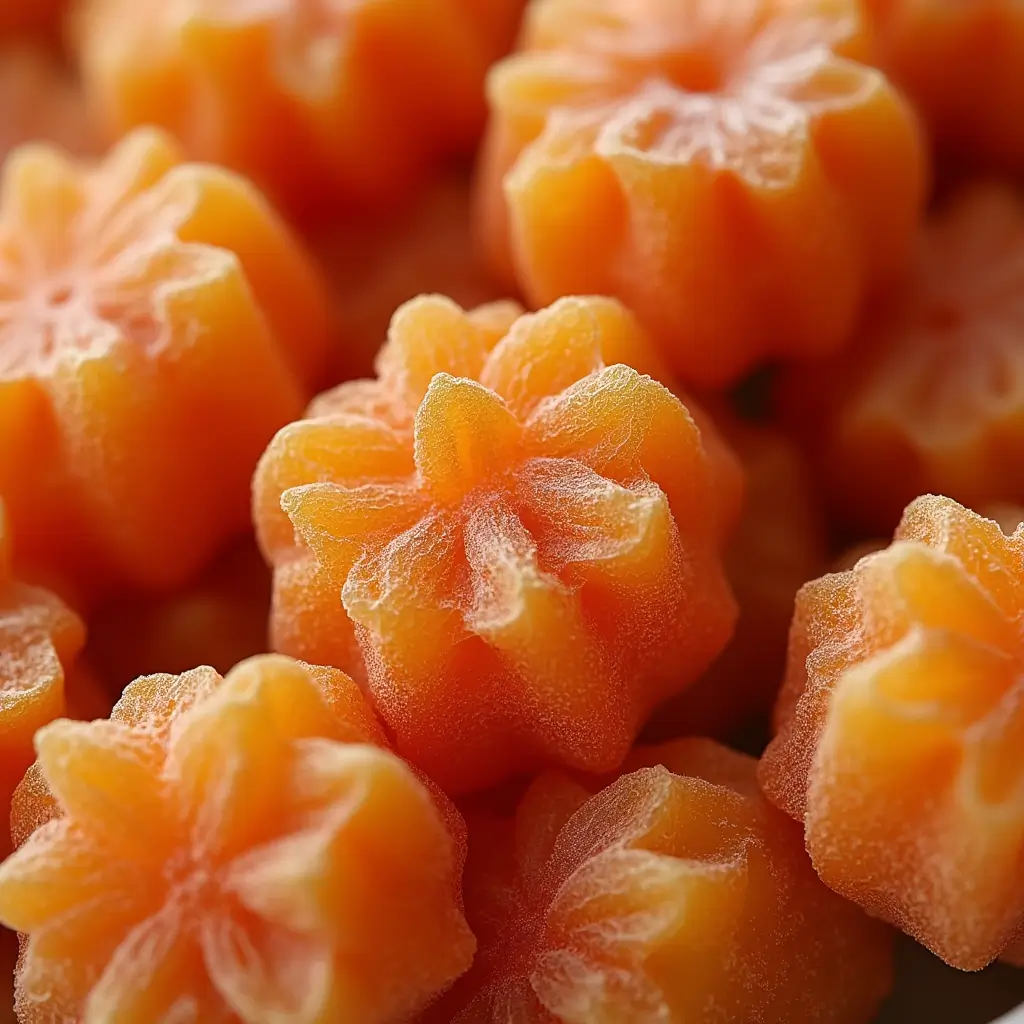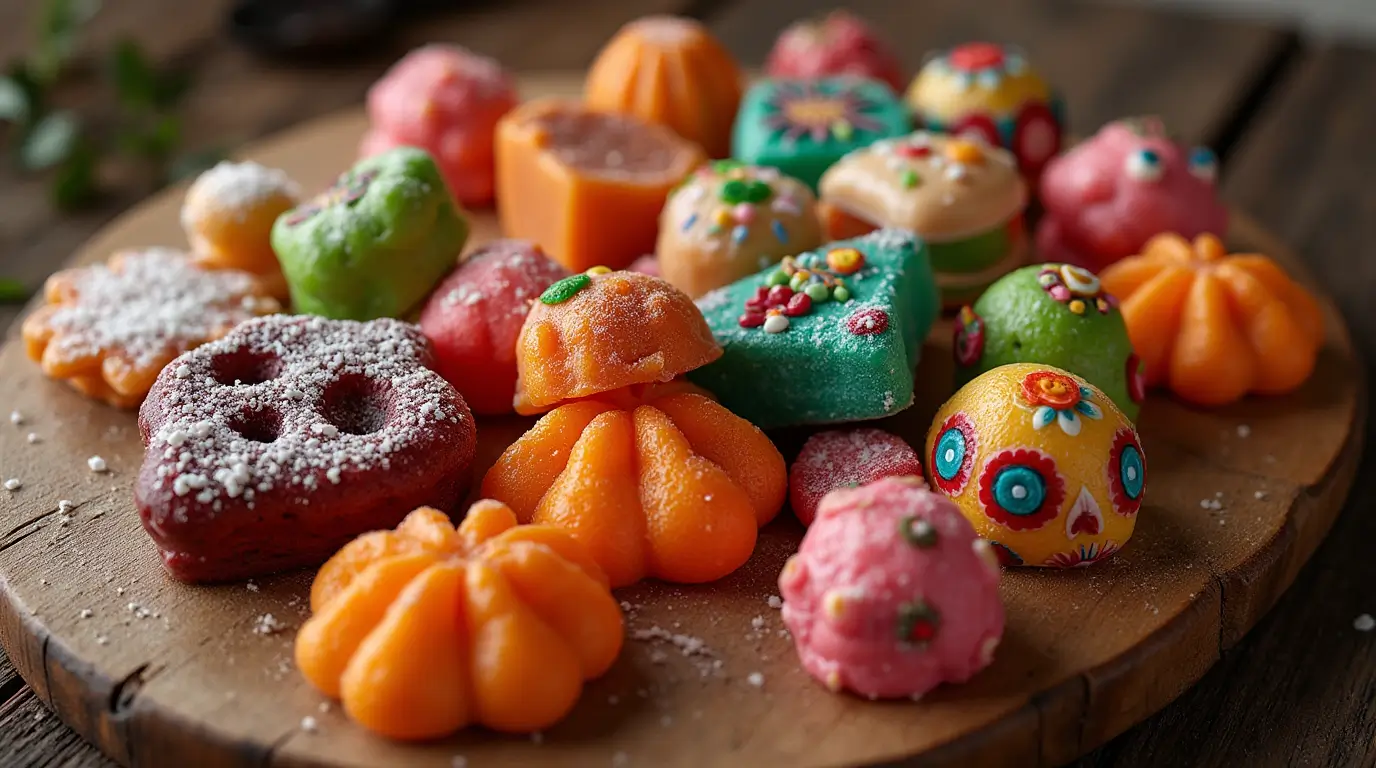Table of Contents
What Makes Mexican Candy Unique
Mexican candy is a delightful and vibrant reflection of the country’s rich culture and culinary heritage. What distinguishes these confections from others around the world is their unique combination of flavors, textures, and ingredients that often draw upon local resources and traditional recipes. This diversity is not merely a matter of taste; it represents a deep-seated cultural identity that permeates various aspects of Mexican life.
One of the most notable characteristics of Mexican candy is its innovative use of ingredients, particularly tamarind, chili, and various fruits. Tamarind, with its tart and tangy flavor, plays a central role in many candies, bringing an unexpected twist to sweet treats. The incorporation of chili adds a level of heat that juxtaposes the usual sweetness found in confections across the globe, creating a distinct taste experience that is both gratifying and intriguing.
The melding of sweets and savory flavors in Mexican candy can also be attributed to historical influences, including indigenous practices and colonial adaptations. Traditional recipes have been passed down through generations, preserving unique methods while incorporating contemporary elements. This evolution has resulted in a wide array of candies such as “pulparindo,” a tamarind-based candy, or “caja de dulces,” featuring a refreshing array of dried fruits.
Moreover, candy plays a significant role in Mexican celebrations and daily life. It is common to see vibrant candy tables at birthdays, weddings, and religious festivities, showcasing not only the artistic craftsmanship but also the communal spirit inherent in these occasions. The presence of Mexican candy within these events demonstrates its importance as a symbol of joy and togetherness, further elevating its cherished status in cultural practices. The unique flavors and cultural significance of these treats undeniably contribute to their popularity and enduring legacy.
For a more in-depth exploration of the various types of Mexican candies and their cultural importance, you might find this guide helpful: Guide to the Unique World of Mexican Candies.
A Dive into the Cultural Significance of Mexican Candy
Mexican candy is much more than a mere indulgence; it serves as a vibrant representation of the rich cultural tapestry of Mexico and its people. Historically, candy-making has roots that trace back to pre-Hispanic times when indigenous communities utilized local fruits, nuts, and natural sweeteners, transforming them into culinary delights. With the arrival of Spanish colonizers, the introduction of sugar and new ingredients like chocolate broadened the horizons of candy-making in Mexico, giving rise to a unique fusion of flavors that is cherished to this day.
In Mexican culture, sweets play an integral role in various celebrations and family traditions. For instance, during festive occasions such as Dia de los Muertos, families create altars adorned with sugar skulls and marigold petals, honoring their deceased loved ones. This practice not only exemplifies the cultural significance of candy but also solidifies family bonds, as these recipes are often passed down through generations. The act of making candy becomes a communal experience, allowing families to gather, share stories, and celebrate their heritage.
Moreover, Mexican candy contributes to a sense of identity among the Mexican diaspora. Whether enjoying a spicy tamarind treat or a sweet marzipan, these candies evoke nostalgia and a profound connection to one’s roots. The flavors and textures of these confections are reminiscent of home, fostering a sense of belonging even in foreign lands. Thus, Mexican candy stands as a testament to cultural resilience and a means of preserving tradition in an increasingly globalized world.
Overall, the importance of Mexican candy transcends mere consumption; it embodies the histories, traditions, and familial connections that define Mexican culture. As people continue to enjoy these delightful sweets, they simultaneously partake in a cultural legacy that celebrates their heritage and unites communities across geographical boundaries.
Popular Types of Mexican Candy

Mexican candy is a vibrant expression of the country’s culture, offering a delightful array of flavors and textures. Among the most popular varieties are tamarind-based treats, which are known for their unique, tangy taste and chewy consistency. One notable example is “Tamarindo,” often available in various shapes, such as balls or sticks, and dusted with sugar and chili powder. This combination of sweet and sour flavors makes tamarind candies a beloved choice, especially among children during festivities and celebrations.
Another significant category encompasses spicy-sweet candies, which perfectly encapsulate the boldness of Mexican flavors. A quintessential example is “Pelon Pelo Rico,” a tamarind pulp candy served in a squeezable container, allowing for fun and interactive consumption. With its spicy and sweet profile, it is often enjoyed as a treat during parties or casual gatherings. Similarly, “Mango con Chile” candy reflects the same contrast, blending dried mango with chili powder—an irresistible combination loved for its vibrant taste and chewy texture.
Traditional sugar skulls, or “calaveras de azúcar,” also hold a prominent place in Mexican candy culture, particularly during the Day of the Dead celebrations. These decorative skulls, made from sugar and adorned with colorful icing, not only serve as treats but also as symbols of remembrance. While they are primarily eaten during the Día de los Muertos festivities, their artistic design makes them popular year-round for gift-giving or as decorative items.
Overall, the diverse types of Mexican candy illustrate the country’s rich culinary heritage, each offering unique flavors and experiences. From the tangy sweetness of tamarind to the vibrant offerings of spicy-sweet combinations, these confections provide insight into Mexico’s cultural traditions and contemporary tastes.
Tamarind Candy: A Flavorful Treasure

Tamarind candy is a unique confection that encapsulates the rich flavors and vibrant culture of Mexico. Derived from the tamarind fruit, this candy offers a delightful combination of sweet, sour, and tangy notes, making it a standout among Mexican treats. The flavor profile of tamarind is distinct, with its refreshing tartness perfectly balanced by sweetness, creating a taste that is both refreshing and invigorating.
In the world of confectionery, tamarind is a versatile ingredient. It is used in a variety of forms, from soft, chewy candies to hard, tangy lollipops. The textures can vary significantly, with some tamarind candies being smooth and pliable, while others may have a crunchy exterior. This variety allows for a wide range of preferences, appealing to many different palates.
The process of making tamarind candy often begins with extracting the pulp from the ripe tamarind pods. This pulp is then cooked and sweetened, sometimes with additional flavors such as chili or lime, to enhance its natural taste. Once the ideal consistency is reached, it can be molded into shapes or coated with sugar, creating enticing treats that are visually appealing as well as delicious.
Tamarind candy enjoys immense popularity in Mexican culture and is commonly found at local mercados and street vendors. Renowned candy brands incorporate tamarind into their product lines, further solidifying its status as a cherished confection. Locals often have fond memories associated with this treat, while visitors are drawn to its unique flavor and the experience it represents. The loyal following of tamarind candy can be attributed to its distinctive taste, versatility, and the cultural significance it holds, making it a flavorful treasure in the world of Mexican candies.
Spicy-Sweet Candies: A Tantalizing Treat

Spicy-sweet candies are a distinctive and cherished aspect of Mexican candy culture, embodying the vibrant flavors that define the country’s culinary traditions. The juxtaposition of sweetness and heat creates an intriguing flavor profile that appeals to adventurous foodies. This genre of candy typically combines traditional sweet ingredients, such as sugar or tamarind, with various spices that deliver a delightful kick. Among the spices commonly used are chili powder, cayenne, and even ingredients like cinnamon, which together play a vital role in this intriguing flavor combination.
The process of making spicy-sweet candies often begins with a base of caramel, tamarind, or even fruit, which is then infused with spices to create a unique taste experience. A popular example is the famous “pulparindo,” a tamarind-based treat that is both tangy and spicy. Another notable entrant in this category is the “mangonada,” a sweet and spicy mango drink topped with chili powder, sugar, and lime, which showcases how these flavors can transcend traditional candy forms into beverages and other culinary creations.
Brands like “Duvalín” and “Bubu Lubu” have also captured the essence of these flavor profiles, combining chocolate with spicy elements to produce candies that are both sweet and spicy. The allure of these sweet treats lies in their ability to surprise the palate, offering an experience that is both refreshing and invigorating. The popularity of spicy-sweet candies in Mexico is not just about the unique flavors; it also reflects the cultural significance of combining different culinary elements in a harmonious manner, making them a must-try for those looking to explore the diverse world of Mexican confectionery.
Traditional Sugar Skulls: A Sweet Symbol of Celebration
Traditional sugar skulls, or “calaveras de azúcar,” serve as vibrant symbols during Día de los Muertos (Day of the Dead) celebrations in Mexico. This festival, which takes place on November 1st and 2nd, is a time for families to come together to honor and remember their deceased loved ones. The sugar skulls, often adorned with colorful icing and intricate designs, embody the belief that death is not sorrowful, but rather a continuation of life marked with festivity and remembrance.
The origins of sugar skulls can be traced back to pre-Hispanic times, with sugar being introduced to Mexico during colonial rule. Their craftsmanship is an art form, wherein artisans mold sugar paste into skull shapes, letting them dry before decorating with bright colors, symbols, and the names of the departed individuals. Each design carries specific meanings; for example, a skull decorated with a cross may represent faith, while floral motifs symbolize the beauty of life. This profound symbolism transforms sugar skulls from simple confections into powerful representations of affection and remembrance.
During Día de los Muertos, sugar skulls are commonly placed on altars, known as “ofrendas,” alongside photographs, favorite foods, and mementos of the deceased. This practice creates a sacred space where the living can reunite with their loved ones, fostering an emotional connection that transcends death. The act of giving sugar skulls serves to remind recipients of their impermanence and the importance of cherishing memories. The varying designs—ranging from whimsical to ornate—testify to the diversity and richness of Mexican culture, making sugar skulls an essential element of the celebration.
In conclusion, traditional sugar skulls represent a unique blend of artistry, culture, and spiritual significance. They are not merely candies, but rather, cultural artifacts that illustrate the enduring bond between the living and the dead, reinforcing the notion that love and memory live on even after death.
Where to Buy Authentic Mexican Candy
For those interested in indulging in the delightful flavors of authentic Mexican candy, various purchasing options are available that range from local stores to online retailers. Locating genuine products can enhance your experience, ensuring you enjoy the true essence of these sweet confections.
One of the most reliable ways to obtain authentic Mexican candy is by visiting local Mexican grocery stores or specialty shops. These establishments typically stock a variety of candies, from traditional sweets to modern treats. It is advisable to browse the aisles and look for brands known for their quality, such as Pelon Pelo Rico, De la Rosa, and Vero. These brands have established a reputation for delivering the classic flavors that consumers expect.
In addition to in-person shopping, many online platforms provide extensive selections of Mexican candy. Websites specializing in Latin American groceries, such as MexGrocer or El Mercado, offer a range of authentic products and often feature customer reviews that can guide your choices. It is essential to ensure that the online retailer has a good reputation and sources its products directly from manufacturers to guarantee authenticity.
When purchasing Mexican candy, pay attention to the ingredient list and packaging. Authentic products will often list their ingredients in Spanish and may include traditional elements like chili powder, tamarind, or coconut. Avoid items that seem mass-produced, as they may lack the unique ingredients and flavors associated with genuine Mexican confections.
By exploring local stores and reputable online shops, candy enthusiasts can discover an array of authentic Mexican treats. Taking the time to seek out the right sources will allow for a richer, more enjoyable experience of this fascinating aspect of Mexican culture.
How to Incorporate Mexican Candy into Your Celebrations
Mexican candy offers a vibrant and exciting way to elevate any celebration, whether it be a birthday, wedding, or any festive gathering. These colorful treats can serve as eye-catching decorations and delightful surprises for your guests. One creative way to incorporate Mexican candy into your events is through party favors. Fill small, themed bags with an assortment of popular candies such as Pulparindo, Tamarind candy, or spicy Mangonadas. Guests will appreciate the thoughtful gesture, as they can taste the sweet and spicy flavors long after the celebration has ended.
Another fantastic idea is to set up a dessert table featuring Mexican candy. A well-arranged display with an array of treats not only adds a pop of color to your party but also invites guests to explore the unique flavors that these candies have to offer. Consider including traditional favorites like Cajeta, De La Rosa Marzipan, or the iconic Catrina candy, arranged alongside cupcakes or other desserts. This fusion of flavors allows for guests to experience a multicultural dessert experience that enhances the festive atmosphere.
Thematic recipes can further integrate Mexican candy into your gatherings. For example, why not create a dessert that incorporates candies like Paletas Pops (Mexican ice pops) or a tantalizing fruit salad topped with spicy Tamarind seasoning? Additionally, you can consider making cocktails with infused flavors reminiscent of Mexican candy, such as a sweetened Mango margarita garnished with a piece of Tamarind candy. These creative culinary adaptations make it easy for people unfamiliar with these cultural treats to appreciate their unique flavors and textures.
The incorporation of Mexican candy not only brings diversity to your celebrations but also provides an opportunity to share the rich cultural heritage behind these unique treats with your guests.
Conclusion: The Sweet Legacy of Mexican Candy
Mexican candy represents a delightful fusion of flavor, tradition, and cultural expression that transcends generations. Throughout this exploration, we have delved into the rich diversity of Mexican sweets, highlighting the various ingredients, regional specialties, and the intricate methods used in their preparation. From the fiery heat of tamarind confections to the subtle sweetness of traditional cajeta, each type of candy offers a unique taste experience that reflects the vibrant culture of Mexico.
The cultural significance of these treats extends beyond mere enjoyment; they play a crucial role in festivities, celebrations, and family gatherings. For many families, creating and sharing Mexican candy is a cherished tradition that fosters memories and strengthens bonds. Furthermore, the use of indigenous ingredients and techniques showcases the deep-rooted history and craftsmanship that characterize Mexican cuisine.
As we have seen, Mexican candy is anything but uniform; it encompasses an array of flavors, textures, and presentations that cater to diverse palates. The interplay of sweet, spicy, and sour notes invites adventurous eaters to explore unfamiliar tastes and textures, creating opportunities for new experiences and discoveries. This rich tapestry of flavors encourages a deeper appreciation for the heritage and artistry behind every bite.
We invite you to embark on your own journey through the sweet world of Mexican candy. Visit local markets, try making some recipes at home, or share your favorite treats with friends and family. Whether you’re a connoisseur or a newcomer to these sweets, there is much joy to be found in experiencing the vibrant flavors and traditions of Mexican confections. Lastly, we would love to hear about your experiences with Mexican candy. What are your favorite types? Share your stories and insights, and let’s celebrate this sweet legacy together.

